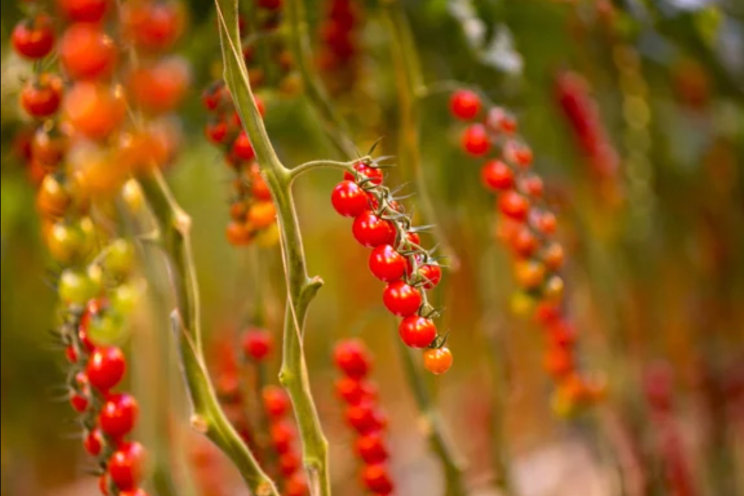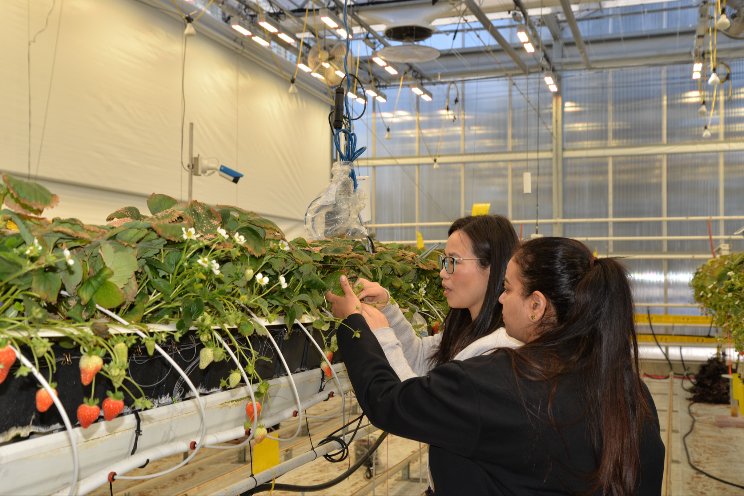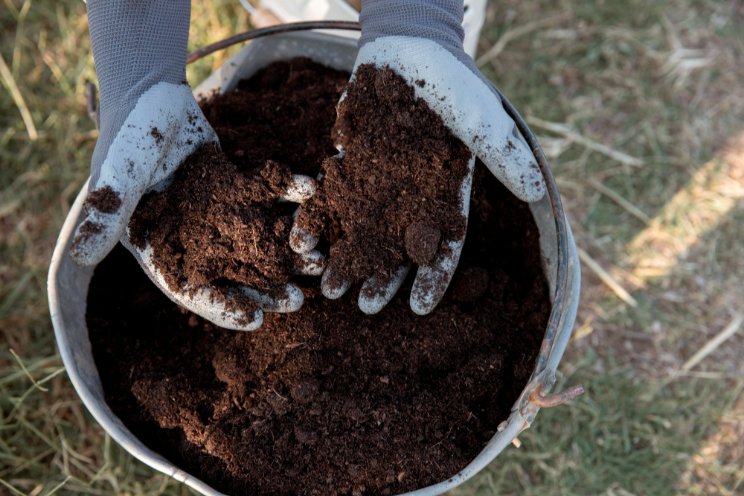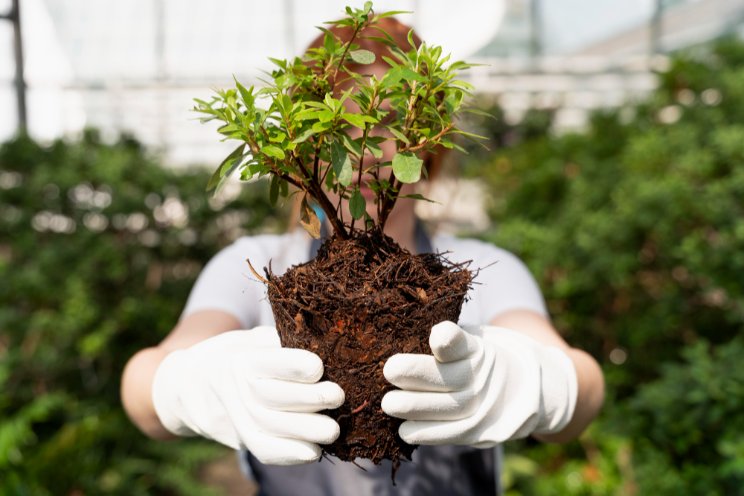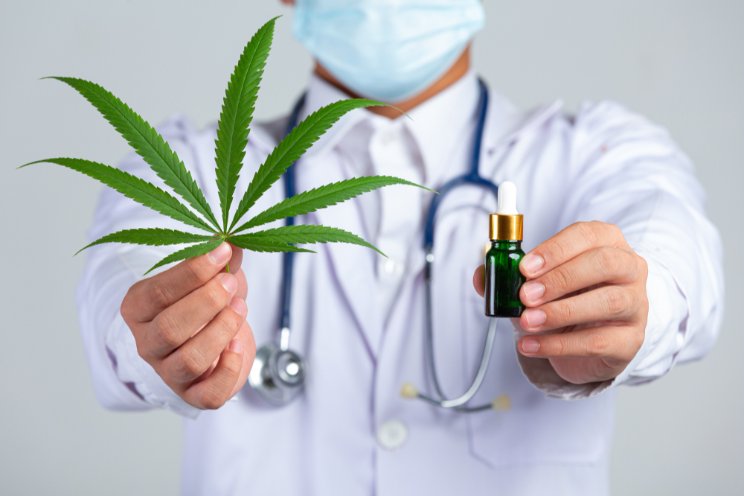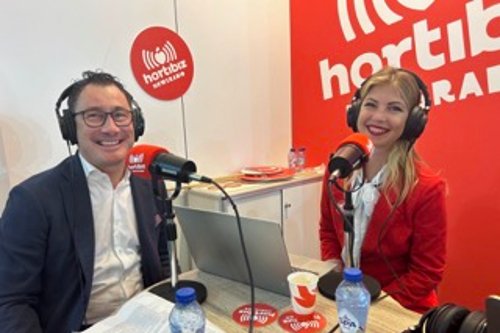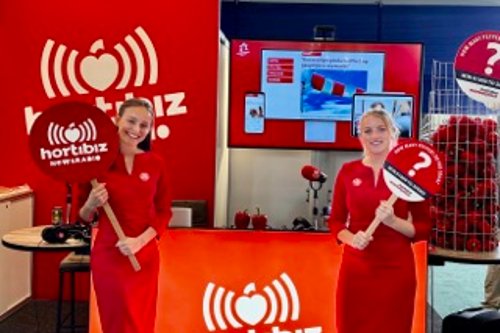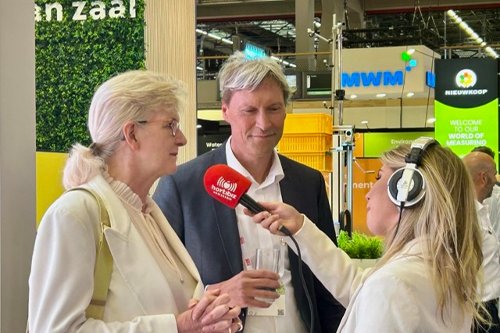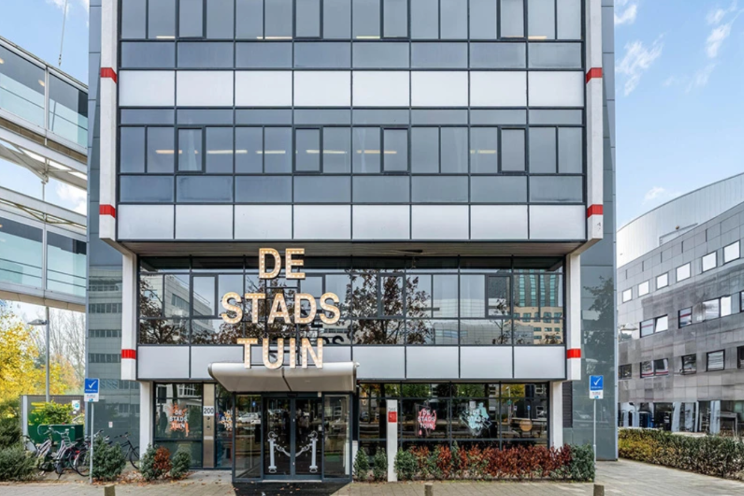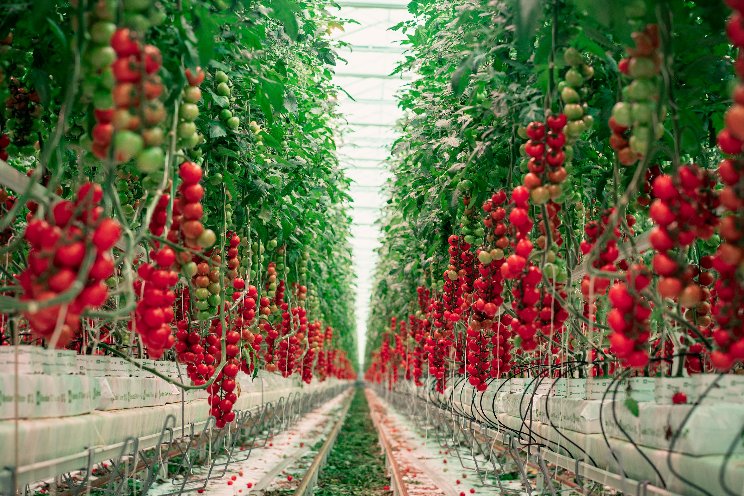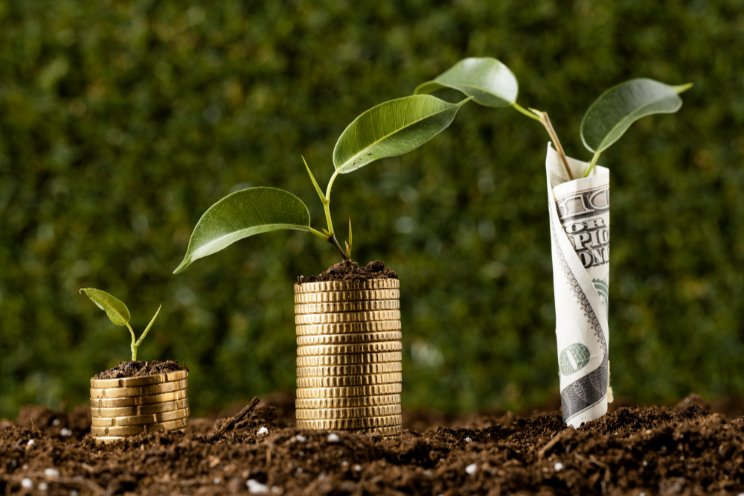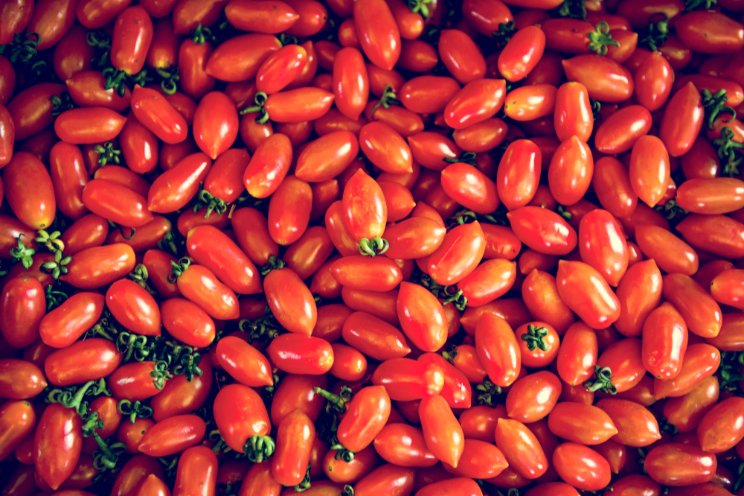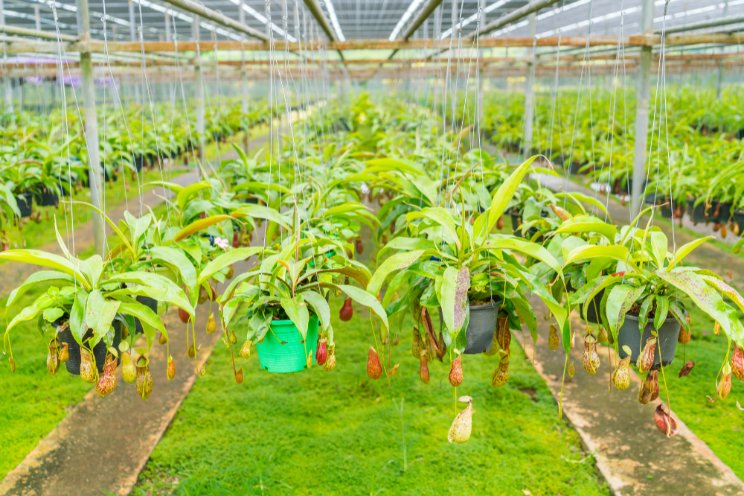Showcasing aquaponics system and harvests tilapia
Added on 17 November 2020
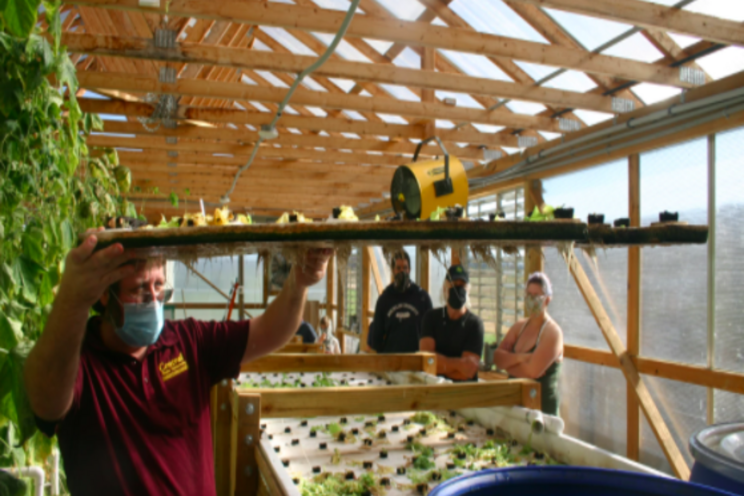

Marc Amante, Central State's Natural Resource Educator in Southwest Ohio, catches fish with a net from the university's aquaponic fish tank during last week's tilapia harvest.
Photo Credit: Chris Welter / WYSO
Aquaponics combines the raising of aquatic animals with the cultivation of hydroponic plants—plants raised without soil. In a traditional hydroponic system, nutrients are injected into the plants.

CSU's Marc Amante shows the root system of the hydroponic lettuce growing in deep water culture beds in the greenhouse. The roots get all the nutrients they need from the fish waste in the water. Photo Credit: Chris Welter
However, aquaponics is considered a closed loop system. The idea is that, as long as you keep adding fish food, the waste from the fish goes to feed the plants. The water supply is also constantly filtered and then recycled through the system.
The demonstration facility has a 1,000 gallon fish tank that holds about 200 tilapia. The tank stays at around 70 degrees and has air stones that keep the water oxygenated.
Water from the fish tank rotates into a waste settling tank. The fish waste settles to the bottom and the nutrient water continues through pipes to feed the plants.
Some of the water goes into eight inch deep "beds" where it feeds the roots of leafy plants floating on its surface. This technique is called a deep water culture system.
The demonstration facility also has fruiting plants growing from something called a dutch bucket system. One of Central State's natural resource educators, Marc Amante, explained:
"Water flows from a pipe into a bucket. The bucket contains the medium and the plant." He said, "there's holes in the bottom. The water drains through into a reservoir that then goes out into the rest of the system."
Amante says the roots of larger fruiting plants like to cling onto the soil-less medium. Central State uses pH neutral clay pellets in its facility.

Marc Amonte shows off the soil-less medium for the dutch bucket system at Central State. Photo Credit: Chris Welter
Jorden Harris is a student worker at the facility. He's a Junior from Xenia who studies Industrial Technology. He said that he sees aquaponics as a potential career.
"I want to open up something as big, if not bigger than this facility right here. You have plants and everything growing just from some fish poop. It's just a self-sustainable whole system." He said, "Nothing you really have to keep putting in other than some fish food. I'd love to do something like this. It would really be a dream."
It's the system's first year, and there have been a few bumps along the way. A few fish died due to a power outage—and in the past few weeks there's been an infestation of aphids. Still, the project has been going so well that visitors got to take home fruiting plants like jalapeńos and cucumbers from the dutch bucket system and lettuce from the deep culture beds in the aquaponic greenhouse.

A hydroponic cucumber ready for harvest inside Central State's aquaponics facility. Photo Credit: Chris Welter
It was also time to harvest the fish who have lived in the greenhouse since April, so those who brought coolers were given fresh, farm-raised tilapia.
Environmental reporter Chris Welter is a corps member with Report for America, a national service program that places journalists into local newsrooms.
Source: WYSO
Source: WYSO
More news
